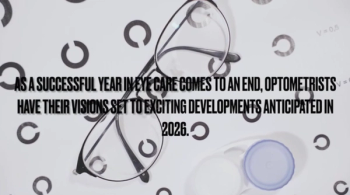
Pregnancy has surprising ocular ties, some rare, some all too common
The connection between pregnancy and the eyes may not be obvious, but several ocular changes, such as dry eyes or declines in IOP, can occur during pregnancy.
Common ocular changes associated with pregnancy include decreased corneal sensitivity and increased corneal curvature, both of which can contribute to dry eye. Decreased IOP in the third trimester has also been reported and could be a concern for patients with glaucoma, said Dr. Cunningham, director of optometry, Dell Laser Consultants, Austin, TX.
Conditions that can be aggravated during pregnancy include diabetic retinopathy, choroidal hemangioma, and uveitis.
Pregnancy itself is an independent risk factor for diabetic retinopathy. The risk of progression depends mainly on the severity of disease. Women who do not have diabetic retinopathy should be evaluated during the first trimester and thereafter based on symptoms.
Patients with mild retinopathy should be seen once during both the first and second trimesters and monthly during the final trimester. In cases of moderate retinopathy, patients should be evaluated every 4 to 6 weeks throughout their pregnancy. Most progression, however, occurs by the end of the second trimester.
Recent studies have suggested that hypertension might be a useful clinical indicator of risk for progression of diabetes, and optometrists might want to add a blood pressure check to their routine visits with pregnant patients who have diabetic retinopathy, Dr. Cunningham added.
Gestational diabetes is not a risk factor for diabetic retinopathy, although it is for development of type 2 diabetes, Dr. Cunningham said.
Choroidal hemangiomas
Choroidal hemangiomas associated with pregnancy are rare but may occur because of increased pressure on blood vessels. In most cases, they can be safely monitored without treatment, but a hemangioma may induce retinal detachment if it is close to the macula or leaking fluid.
Uveitis is more common in pregnancy but often misdiagnosed or untreated by obstetricians. Recurrence during pregnancy is well established in the literature. The direct relationship is not understood; however, patients often have a preexisting systemic condition such as Behcet's or Vogt-Koyanagi-Harada syndrome. These patients as well as women with a history of uveitis should be counseled about the possibility of a uveitic attack during pregnancy (most likely during the first trimester) or postpartum.
Newsletter
Want more insights like this? Subscribe to Optometry Times and get clinical pearls and practice tips delivered straight to your inbox.










































